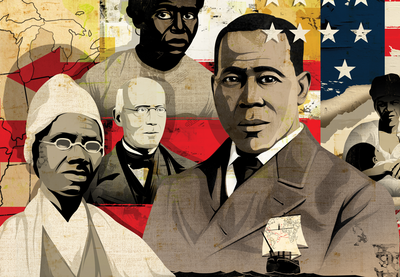Students should know that enslaved Indigenous people and Africans came from nations with diverse cultures and traditions and that they continued many of these traditions while enslaved.
What Else Should My Students Know?
3.A Indigenous peoples have always governed their own nations in the lands that are now the United States.
3.B Europeans enslaved millions of Indigenous people when they invaded the Americas. Other Indigenous communities were attacked through warfare, diseases, land dispossession and forced assimilation.
3.C The rich cultures of Indigenous people persisted despite the colonial invasion. Many people are working to support the resurgence of Indigenous languages and ways of seeing the world.
3.D Africa is a continent that has always been home to many people, nations and cultures.
3.E Millions of people were brought against their will from Africa and enslaved in the Americas.
3.F Enslaved Africans brought skills, food, music, clothing, language and religious practices with them to the Americas‚ a cultural heritage that is still with us in our daily lives.
How Can I Teach This?
- Learning about culture should begin with students exploring their own identities and identifying parts of their lives that constitute their home culture. Comparing similarities and differences between cultures in the classroom community will prepare students to consider more unfamiliar cultures.
- When teaching about other eras, nations and cultures, focus on similarities with students’ lives first before moving to discuss differences. Learning about “cultural universals” such as art forms, group rules, social organization, family structures, basic needs, language and celebrations helps students to recognize that people are bound together by similarities, regardless of group membership.
- Students should learn about music, arts, religion and food from a selection of nations. They should compare and contrast those experiences, asking: “What is the same about these traditions?” “What is different?” “How are these the same as and different from your culture?” Exploring the commonalities between students’ home cultures and the diverse cultures of Indigenous and African peoples will help students to have empathy for those who were enslaved.
- Use trade books that establish the humanity of Indigenous and African people before introducing the idea of enslavement. Choose books such as Bowwow Powwow and The People Shall Continue.
- As you introduce the idea of slavery, use books that show the roots of enslaved people in their home cultures, such as Now Let Me Fly: The Story of a Slave Family, In the Time of Drums and Never Forgotten.
